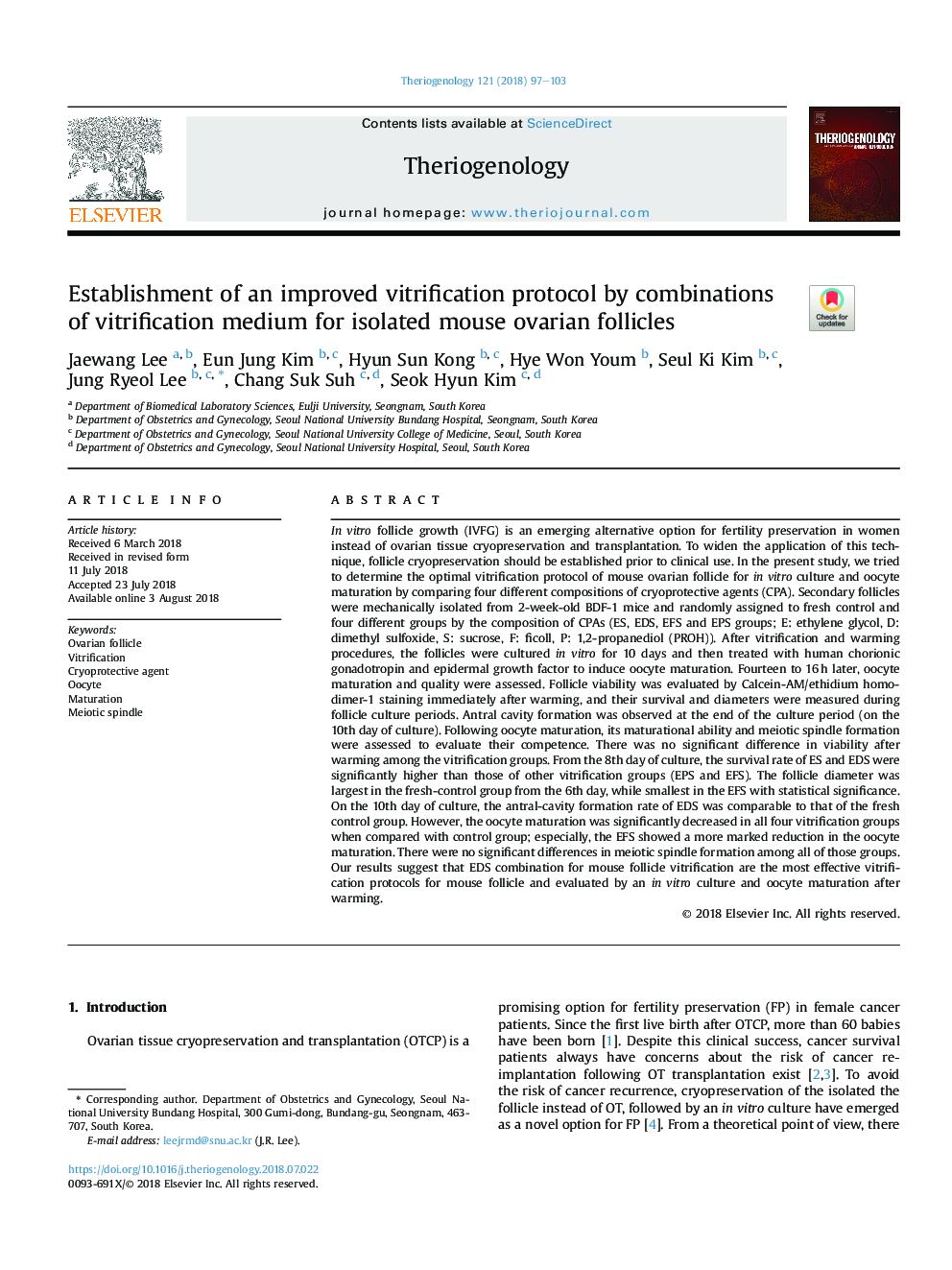| کد مقاله | کد نشریه | سال انتشار | مقاله انگلیسی | نسخه تمام متن |
|---|---|---|---|---|
| 8943830 | 1645208 | 2018 | 7 صفحه PDF | دانلود رایگان |
عنوان انگلیسی مقاله ISI
Establishment of an improved vitrification protocol by combinations of vitrification medium for isolated mouse ovarian follicles
ترجمه فارسی عنوان
ایجاد پروتکل تقویت انجماد با ترکیبی از محیط انجماد برای فولیکول های جدا شده موش صحرایی
دانلود مقاله + سفارش ترجمه
دانلود مقاله ISI انگلیسی
رایگان برای ایرانیان
کلمات کلیدی
فولیکول تخمدان، تبخیر کردن، عامل محافظتی اووسیت، بلوغ، اسپیندل مایوتیک
موضوعات مرتبط
علوم زیستی و بیوفناوری
علوم کشاورزی و بیولوژیک
علوم دامی و جانورشناسی
چکیده انگلیسی
In vitro follicle growth (IVFG) is an emerging alternative option for fertility preservation in women instead of ovarian tissue cryopreservation and transplantation. To widen the application of this technique, follicle cryopreservation should be established prior to clinical use. In the present study, we tried to determine the optimal vitrification protocol of mouse ovarian follicle for in vitro culture and oocyte maturation by comparing four different compositions of cryoprotective agents (CPA). Secondary follicles were mechanically isolated from 2-week-old BDF-1 mice and randomly assigned to fresh control and four different groups by the composition of CPAs (ES, EDS, EFS and EPS groups; E: ethylene glycol, D: dimethyl sulfoxide, S: sucrose, F: ficoll, P: 1,2-propanediol (PROH)). After vitrification and warming procedures, the follicles were cultured in vitro for 10 days and then treated with human chorionic gonadotropin and epidermal growth factor to induce oocyte maturation. Fourteen to 16â¯h later, oocyte maturation and quality were assessed. Follicle viability was evaluated by Calcein-AM/ethidium homodimer-1 staining immediately after warming, and their survival and diameters were measured during follicle culture periods. Antral cavity formation was observed at the end of the culture period (on the 10th day of culture). Following oocyte maturation, its maturational ability and meiotic spindle formation were assessed to evaluate their competence. There was no significant difference in viability after warming among the vitrification groups. From the 8th day of culture, the survival rate of ES and EDS were significantly higher than those of other vitrification groups (EPS and EFS). The follicle diameter was largest in the fresh-control group from the 6th day, while smallest in the EFS with statistical significance. On the 10th day of culture, the antral-cavity formation rate of EDS was comparable to that of the fresh control group. However, the oocyte maturation was significantly decreased in all four vitrification groups when compared with control group; especially, the EFS showed a more marked reduction in the oocyte maturation. There were no significant differences in meiotic spindle formation among all of those groups. Our results suggest that EDS combination for mouse follicle vitrification are the most effective vitrification protocols for mouse follicle and evaluated by an in vitro culture and oocyte maturation after warming.
ناشر
Database: Elsevier - ScienceDirect (ساینس دایرکت)
Journal: Theriogenology - Volume 121, November 2018, Pages 97-103
Journal: Theriogenology - Volume 121, November 2018, Pages 97-103
نویسندگان
Jaewang Lee, Eun Jung Kim, Hyun Sun Kong, Hye Won Youm, Seul Ki Kim, Jung Ryeol Lee, Chang Suk Suh, Seok Hyun Kim,
